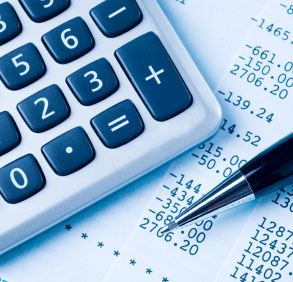Goods or resources have price because they are scarce and may have alternative uses. When a society uses resources to produce a specific good, it loses (forgoes) the opportunity to use this good for any other purpose. Economic cost or opportunity costs measure the value or worth of a good that would have in its best alternative use.
Explicit and Implicit Costs
Now let’s consider costs from a business viewpoint. Keeping opportunity costs in mind, we may say that economic costs are payments that a business must make or income it must provide, to attract resources it needs from alternative uses. These payments to resource providers may be explicit (expressed) or implicit (present but not obvious). So firms have both implicit and explicit costs while they are producing goods:
- A firm’s explicit costs are payments that it makes for labor force, resources, transportation of goods and so on.
- A firm’s implicit costs are the opportunity cost for the goods it owns and it produces. They are the monetary payments that those resources could have earned if they were used in their best alternative uses.
Normal Profit
Normal profit (an implicit cost for firms) is the monetary payment that a firm must make to obtain and retain entrepreneurial ability also we may call it as minimum payment entrepreneurial ability must receive to perform the entrepreneurial activity for a firm. For example if you are entrepreneur and you didn’t receive this minimum payment for your effort you could easily withdraw from a business and move to a more attractive one.
Economists include as costs of production all payments- implicit (including normal profit) and explicit, which are required to attract resources in a specific economic unit.
Economic Profit
To economists, economic profit is the difference between total revenue (TR) and total costs (TC) (implicit and explicit). So when it is said that a firm receives normal profit, it means that it receives the money needed to cover it costs (implicit and explicit) and the entrepreneur is receiving payments large enough to retain his abilities in this production line.
Economic profit is not a cost, better said it is excess revenue offered to entrepreneur in his line of production.
Short Run and Long Run
When firm’s demand changes its profit may depend how quickly it can adjusts to various amount of resources it employs. It can quickly adjust the quantity of resources employed of labor, fuel, resources. However, to adjust plant capacity (size of factory, amount of equipment and machinery and other capital resources) more time it’s needed. For example in heavy industries time needed to increase plant capacity can be very long. That’s why economists distinguish two conceptual periods: long run and short run.
Short Run
In short run plant capacity is assumed to be fixed because period of time is too short; however it is enough to perform several changes in the method how the fixed plant is used. For example, firm may vary the quantity output by applying different amount of labor force, materials and other resources needed to that plant.
Long Run
Long run is a period long enough to adjust all quantities of resources that a firm needs even a change in plant’s capacity can occur. For industry, long-run is the period of time in which firms can also leave or enter the industry. While short run determines “fixed-plant” period, long run determines “variable-plant” period.



